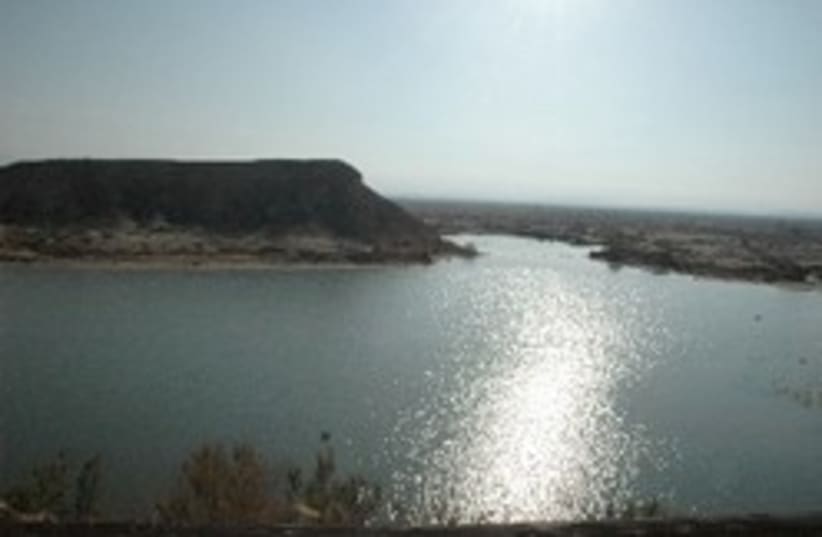A blessing in disguise
The freeze of the planned copper mining project in the Arava will save the region.
Last week Mexican mining company Altos Hornos de México (AHMSA) decided to freeze its plan to reopen the ancient Timna Copper Mines in the southern Arava. Even with the loss of 2,000 expected jobs for the Arava, AHMSA has actually done the region a great service in its reluctance to continue the project. Heavy mining would be dangerous for our fragile region and our growing tourism economy. It would create an unsustainable long-term future for a region which has prided itself on sustainable growth and development as a center for the new solar economy.
The stated reason for AHMSA's departure was Israeli government bureaucracy and delay in providing the company with $35 million in promised investment subsidies. An underlying cause could also be the price of copper, which has plummeted from $4.00 to $1.50 per pound over the past six months. It is also possible that the freeze is a ploy to put pressure on the Israeli government to crank its bureaucratic wheels faster. Nonetheless, the project freeze is not a loss to the Arava region - it is in fact a blessing in disguise.
Large scale mining would be an especially destructive for the Arava's fragile environment and rapidly growing tourism industry. Copper extraction uses large amounts of sulfuric acid to leach the minerals from underground rocks, which involves collecting volatile chemical liquids in pools and then turning them into metal sheets which must be transported frequently. This heavily polluting industry would be in the immediate vicinity of Timna National Park, which is visited by over 400,000 tourists annually. Furthermore, large amounts of volatile sulfuric acid would be transported to the mines on Route 90, the Arava's only highway, which already has one of the highest accident rates in the country. Copper mining in this area is only a disaster waiting to happen.
FURTHERMORE, THE MINING initiative stands in contradiction to newly reaffirmed regional goals regarding the Arava's principle resource: sunshine. The Hevel Eilot Regional Council recently announced the establishment of the region as a center for renewable energy and solar based clean-tech industries. The vision is to become the Silicon Valley of renewable energy in the Middle East with solar panels spanning the desert sands.
While solar energy and wind and bio-fuels are the basis of a strong future for a sustainably minded region, mineral mining is one of the most unsustainable forms of development. When the minerals are used up and the cost of extraction becomes prohibitively expensive, international mining companies pick up their shovels and move to the next country, leaving ghost towns behind. The local community is left with high unemployment, polluted water resources, a damaged landscape, and, eventually, abandoned homes. In the United States, such ghost towns are scattered across West Virginia, Colorado and Montana - empty memories of unsustainable growth that are a lesson for southern Israel.
I moved to the southern Arava in 1978 as a pioneer and joined a young kibbutz ready to make the desert bloom. In the past 30 years I have come to learn firsthand that the Arava is a national treasure of some of Israel's most dramatic landscapes with exotic species of flora and fauna found nowhere else in Israel, or even the world. The Negev and the Arava are Israel's last wildernesses. They can be protected and preserved for future generations with smart renewable development. In this case, AHMSA's sudden departure was, indeed, a blessing in disguise.
The writer is the director of the Arava Institute for Environmental Studies at Kibbutz Ketura.
if(catID != 151){
var cont = `Take Israel home with the new
Jerusalem Post Store
Shop now >>
`;
document.getElementById("linkPremium").innerHTML = cont;
var divWithLink = document.getElementById("premium-link");
if(divWithLink !== null && divWithLink !== 'undefined')
{
divWithLink.style.border = "solid 1px #cb0f3e";
divWithLink.style.textAlign = "center";
divWithLink.style.marginBottom = "40px";
divWithLink.style.marginTop = "40px";
divWithLink.style.width = "728px";
divWithLink.style.backgroundColor = "#3c4860";
divWithLink.style.color = "#ffffff";
}
}
(function (v, i){
});

